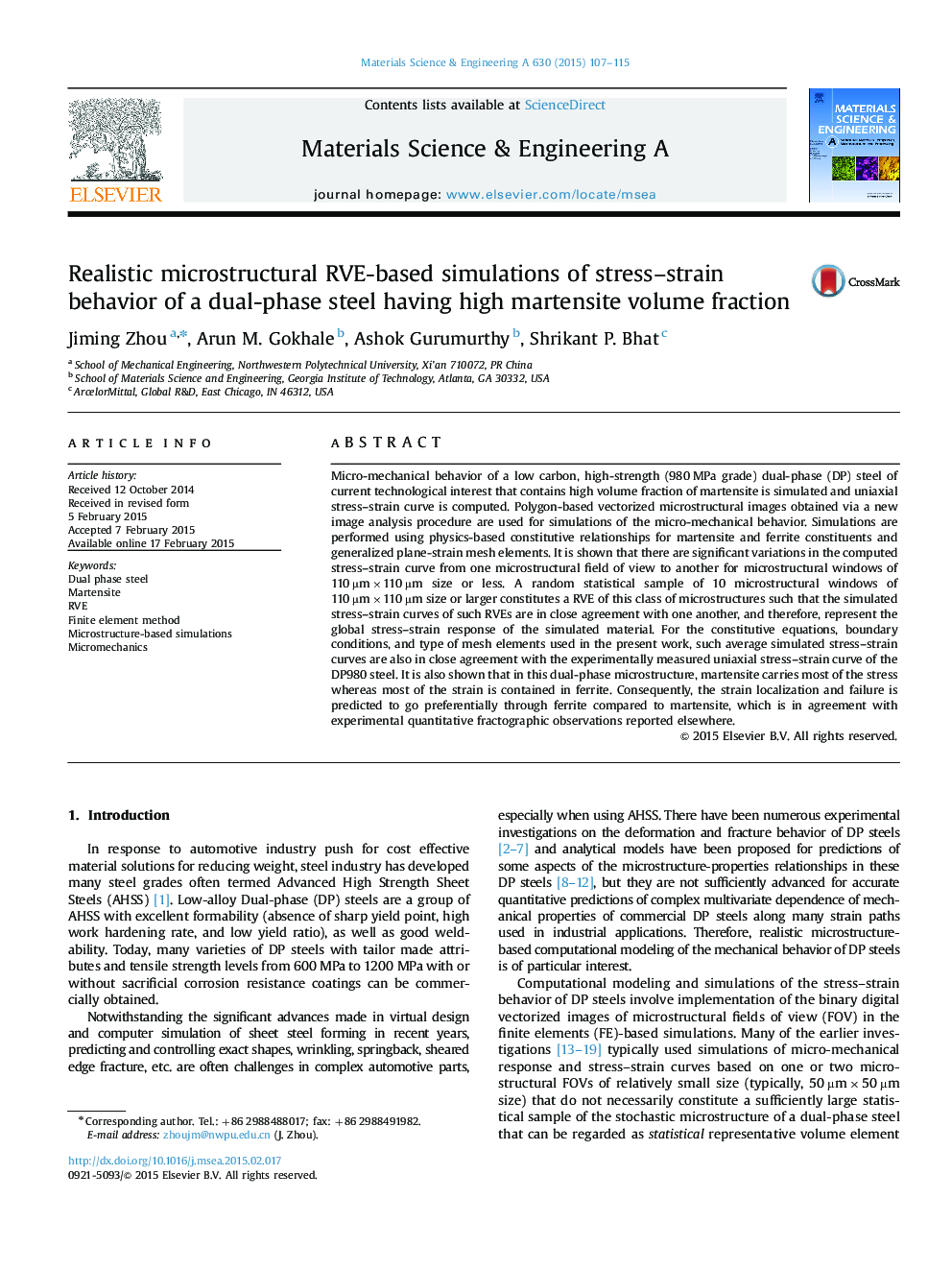| Article ID | Journal | Published Year | Pages | File Type |
|---|---|---|---|---|
| 1574448 | Materials Science and Engineering: A | 2015 | 9 Pages |
ABSTRACTMicro-mechanical behavior of a low carbon, high-strength (980 MPa grade) dual-phase (DP) steel of current technological interest that contains high volume fraction of martensite is simulated and uniaxial stress–strain curve is computed. Polygon-based vectorized microstructural images obtained via a new image analysis procedure are used for simulations of the micro-mechanical behavior. Simulations are performed using physics-based constitutive relationships for martensite and ferrite constituents and generalized plane-strain mesh elements. It is shown that there are significant variations in the computed stress–strain curve from one microstructural field of view to another for microstructural windows of 110 µm×110 µm size or less. A random statistical sample of 10 microstructural windows of 110 µm×110 µm size or larger constitutes a RVE of this class of microstructures such that the simulated stress–strain curves of such RVEs are in close agreement with one another, and therefore, represent the global stress–strain response of the simulated material. For the constitutive equations, boundary conditions, and type of mesh elements used in the present work, such average simulated stress–strain curves are also in close agreement with the experimentally measured uniaxial stress–strain curve of the DP980 steel. It is also shown that in this dual-phase microstructure, martensite carries most of the stress whereas most of the strain is contained in ferrite. Consequently, the strain localization and failure is predicted to go preferentially through ferrite compared to martensite, which is in agreement with experimental quantitative fractographic observations reported elsewhere.
